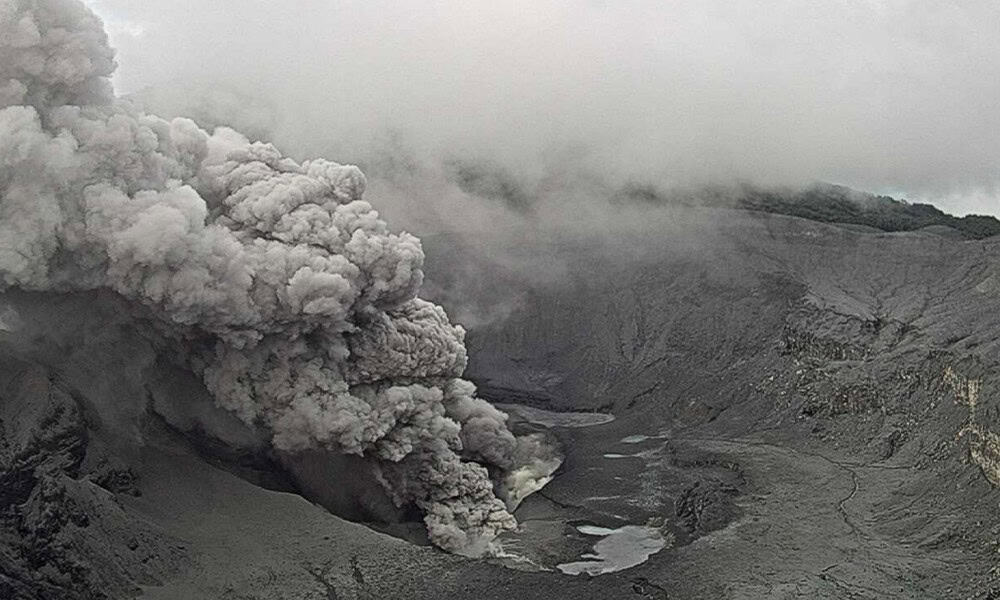Poás Volcano’s crater is emitting a red glow, identified by the Volcanological and Seismological Observatory of Costa Rica (OVSICORI-UNA) as burning sulfur, amid ongoing eruptions. Yesterday, eruptions ejected incandescent material, following an earlier eruption with a 3.5-kilometer ash plume. A Facebook video to be added with this report shows the glow and ash clouds from recent activity.
OVSICORI volcanologist Geoffroy Avard explained that sulfur dioxide and hydrogen sulfide gases, released from magma, form solid sulfur deposits. At 160°C, these deposits ignite, producing the visible glow through an exothermic reaction that releases heat and light. The same gases fuel eruptions, with sulfur dioxide emissions ranging from 600 to 5,000 tons per day since March. Webcams have captured the glow, prompting public curiosity, with OVSICORI confirming it is not lava but a chemical process tied to the volcano’s sulfur-rich system.
Eruptions yesterday marked the latest in a series of events, following significant activity, when ash reached 4.5 kilometers, spreading to Grecia, Alajuela, Heredia, and San José. The eruption in late April dispersed ash westward, driven by high winds. OVSICORI reported over 200 high-frequency earthquakes in March and persistent seismic tremors, signaling ongoing volcanic unrest. Avard noted that gas and ash emissions escalate rapidly, reflecting the volcano’s unpredictable nature.
The National Emergency Commission (CNE) issued a Red Alert for Poás Volcano National Park, closing it since March 26. Grecia and Sarchí are under orange alert, while Alajuela, Poás, and Zarcero face yellow alert due to ashfall and risks of lahars—mudflows triggered by rain mixing with ash. Health officials recommend N95 masks to address respiratory issues, eye irritation, and allergies caused by ash and toxic gases.
Ashfall and acid rain have damaged coffee crops and pastures in Grecia and Sarchí, disrupting local agriculture. Tourism in Poás and Poasito has declined 40–67%, impacting businesses dependent on park visitors. The CNE warns of lahar risks along rivers like Desagüe and Agrio, advising residents to avoid waterways. OVSICORI and CNE urge monitoring official updates and avoiding restricted zones to ensure safety.








